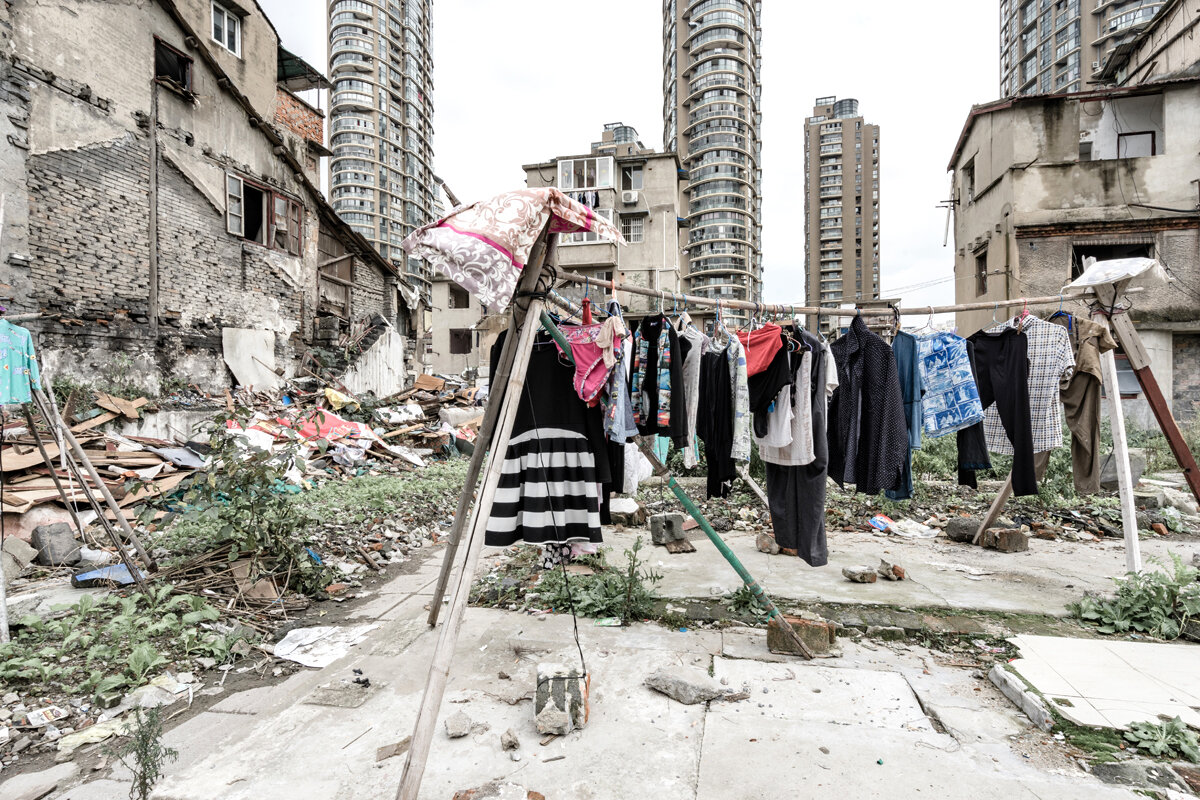Sonic Spectres of China’s Urban Villages
A sonic- and photo-journalism project with photographer Alessandro Zanoni
Sonic Spectres of China’s Urban Villages is a collaboration between Naomi Waltham-Smith and Alessandro Zanoni than examines the spaces, forms of life, and soundscapes that have been lost or are threatened by urban redevelopment in Shanghai and Shenzhen. As a result of China’s rapid urbanization, rural villages have been absorbed into the fabric of many large Chinese cities and transformed into urban villages that provide affordable housing for migrant workers. They represent a particular morphology—a high-density, mixed-use, pedestrian-friendly exception to car-dominated urbanisms in China—and with it a form of the commons that is being eroded through wholesale demolition, the imposition of an homogenous grid, and the displacement of migrant workers to make room for commercial spaces and luxury apartments. This project attempts to capture the sense of loss and the fragility of these autonomous spaces that provide refuge for the precariat and that shelter an experience of the commons eroded by neoliberal modes of subjectivation.
The project presents a series of paired photographs and “sonic stills”—snapshots, each of precisely one minute duration—drawn from a periods of intensive fieldwork in a number of urban villages. In a critical repurposing of practices of montage, bricolage, and flânerie—the juxtaposition of sound and image presents an urban spectrality—a lost city and communal form of life that haunts capitalist processes of creative destruction. Inspired by the empty peripheria of postwar Italian cinema, Zanoni’s photographs exemplify a practice of urban landscape photograph that contrasts with the typical photojournalistic depiction of global urban precarity. Many of the photos are shot during the middle of the day so that the evenness and hue of the light increases the sense of alienation. Showing the vestiges of abandoned lives and unpopulated or scarcely populated scenes, an often subtly humorous or whimsical tone nonetheless turns away from the tragic or nostalgic character of photography of urban ruins.
Moreover, the sonic stills are paired with the images in such a way that the coupling is often uneasy, surprising, or ironic. The sonic snapshots capture the dynamic, energetic interactions that characterize the coexistence of the urban villagers and their use of public space. As such, they offer a promise to animate the desolate spaces of the images. Echoes of a life lost or fading into extinction, the soundscapes haunt the empty spaces, but the incommensurability of the media—the refusal of two stills to resolve into moving image and the contradictory temporality that each invokes—ensures that they never quite fulfil the promise of presence. As such, the sonic stills testify to a form of survival that outlives the rapacity of capitalist destruction and yet the ephemerality and finitude of the sonic contaminates this possibility.
In this way, this multimedia project—as a collection of visual and audio documents—also reflects on the state of the archive. Not simply a nostalgic immunization against lost and an exercise of memory, the archive itself is a space traversed by conserving and destructive impulses. The sonic spectrality that haunts the images points to the fact that every archive is constituted around a secret—by a repressed that returns like a revenant. On the one hand, the soundscapes are witnesses—alibis even—for those precarized and marginalized under neoliberalism. On the other, they reveal the aporetic logic of testimony: those who survive cannot bear witness to the experience of those who do not. This project invites us, in listening to the lives of the precarious, to ponder what it means politically and ethically for our listening to survive their survival.












